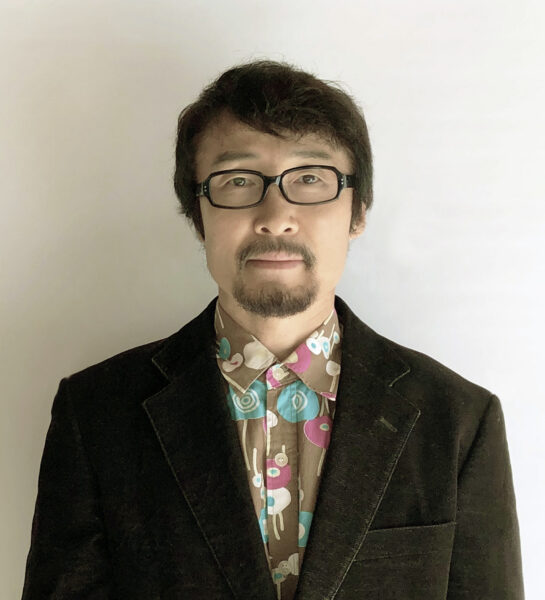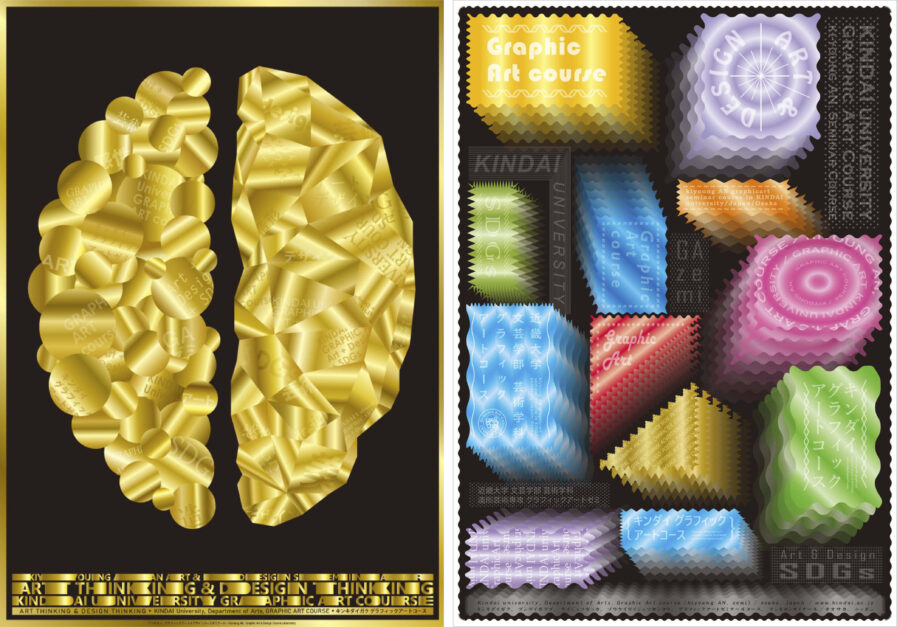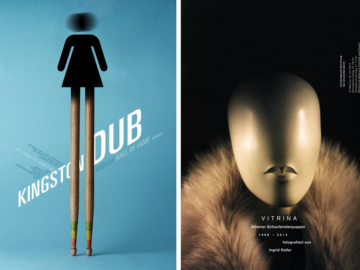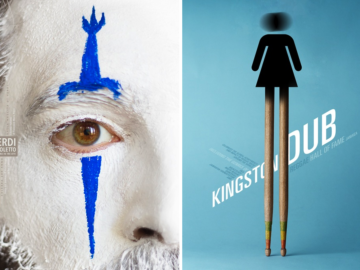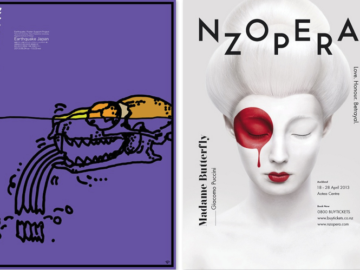In the heart of Osaka, nestled within the walls of Kindai University, a Graphic Arts course taught by award-winning poster designer Kiyoung An emerges as a light of convergence. Here, the worlds of graphic design and fine arts not only coexist; they intertwine, challenging traditional boundaries. Kiyoung An’s yearly informational posters (such as these Platinum and Gold-winning works) go beyond communicating curriculum—they narrate a saga of studies to redefine the dialogue in an age powered by artificial intelligence. Read on to learn more about the inspiration for the posters.
By: Kiyoung An
The course I am in charge of is part of the Faculty of Literature at Kindai University, located in Osaka, Japan. The course was launched 14 years ago and was originally called the Visual Communication Design Course. Eventually, the department’s name was changed to the Graphic Art Course six years ago. The original important keyword, design, was changed to art to represent how this course combines both commercial design and fine arts education.
Designers and artists often try to keep their distance from each other when they don’t respect each other’s work. My course aims to instill a mindset in students that respects and understands design and art, digital and analog, as one world. That said, these two posters are presented each year before class begins and serve as a visual means of communicating this educational message to students who have chosen this course of study.
The posters are further displayed during the lesson plan/briefing session that is held twice a year at the commencement of the first and second semester classes. However, there are many instances where it becomes imperative to delve deeper into this concept for students who are being immersed in it for the first time. This is especially relevant at our university (which is not primarily focused on the arts), as many students require assistance in comprehending the nuances and distinctions between art and design. Consequently, we have introduced this course and developed these posters as a means to address this issue.
In the era of artificial intelligence, design is increasingly sharing the power of fine art. And as digital technology develops, discovering what machines cannot do has become more important than ever. These days, I am dedicating more of my time to analog work. Also, to be a good class presenter, one must understand “design thinking” and “art thinking” to clearly communicate the differences and meanings. Furthermore, for students who have completed my graphic arts course, it is important for them to be proficient in applying both modes of thought. With that in mind, I look forward to my ongoing journey as an expressionist artist who contributes to shaping the future of society.
Born in South Korea, Kiyoung An moved to Japan in 2000 where he graduated from the Tokyo University of the Arts after studying a doctoral course in design. He is now a professor at KINDAI University and is part of the Department of the Arts. He is also an established designer and was a judge for the Korea Design Exhibition Award (KIDP). Other competitions he has judged include the Daegu City C.I. Design, the Daedong Bank C.I. Design, the Miyazaki National University Logo Design, and the Etajima City Logo Design.
